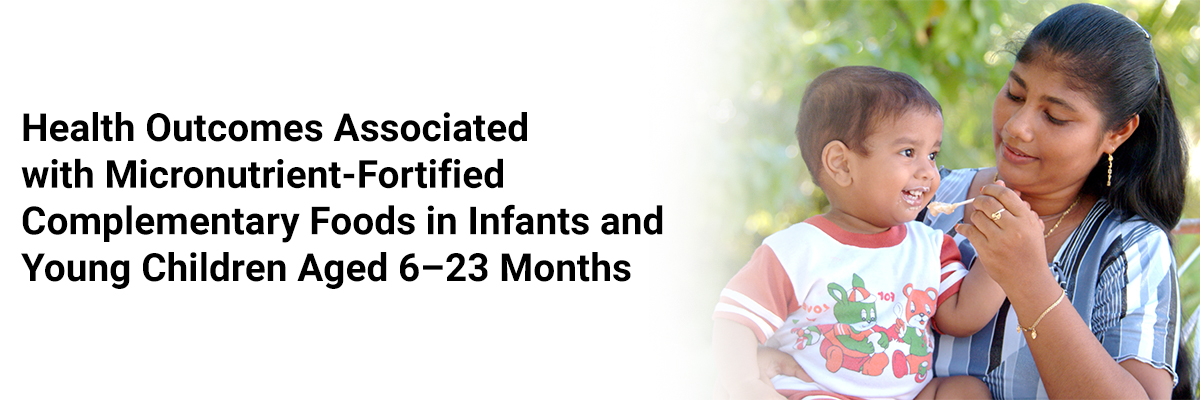
 IJCP Editorial Team
IJCP Editorial Team
Health outcomes associated with micronutrient-fortified complementary foods in infants and young children aged 6-23 months
Proper feeding of infants and young children is crucial for healthy growth and preventing stunting, wasting, and being overweight. A recent study assessed the beneficial versus harmful effects of providing fortified complementary foods to children in the complementary feeding period.
It searched the reputed databases from inception to March 9, 2021, to include randomized controlled trials and controlled clinical trials done in infants and children (aged 6–23 months) without any health problems. It compared the consumption of foods fortified centrally (i.e., during industrial processing) with one micronutrient or a combination of vitamins, minerals, or both with the same complementary foods but without micronutrient fortification.
The study looked for growth (measured by Z scores for weight for age, weight for height or length, and height or length for age, or other growth measures), stunting, wasting, nutrient adequacy or excess, anemia, hemoglobin concentration, iron status, serum zinc concentration, and serum retinol concentration as the outcome measures.
The meta-analysis included 16 studies with 6423 participants (13 from malaria-endemic areas). Overall, it included 12 studies in the quantitative syntheses. It also identified five further ongoing studies.
The analysis found no difference between participants who received fortified complementary foods and those who received non-fortified complementary foods in weight-for-age Z scores, weight-for-height or length Z scores, and height or length-for-age Z scores. None of the studies assessed stunting and wasting as outcomes. Assessing moderate-certainty evidence from six trials with 1209 patients revealed that providing fortified complementary foods to children aged 6–23 months reduced the risk of anemia. It also found higher hemoglobin and ferritin concentrations in those who received fortified complementary foods than those who did not. The intervention found no effects on serum zinc concentration and serum retinol concentration.
Thus, Fortified complementary foods can serve as effective strategies to prevent anemia in infants and young children aged 6–23 months in malaria-endemic regions. The effects of complementary food fortification need further investigation in low-income and middle-income countries, as well as in high-income countries and areas where malaria is not endemic.
Csölle I, Felső R, Szabó E, et al. Health outcomes associated with micronutrient-fortified complementary foods in infants and young children aged 6–23 months: a systematic review and meta-analysis. The Lancet Child & Adolescent Health. 2022;6(8):533-544. https://doi.org/10.1016/S2352-4642(22)00147-X.

IJCP Editorial Team
Comprising seasoned professionals and experts from the medical field, the IJCP editorial team is dedicated to delivering timely and accurate content and thriving to provide attention-grabbing information for the readers. What sets them apart are their diverse expertise, spanning academia, research, and clinical practice, and their dedication to upholding the highest standards of quality and integrity. With a wealth of experience and a commitment to excellence, the IJCP editorial team strives to provide valuable perspectives, the latest trends, and in-depth analyses across various medical domains, all in a way that keeps you interested and engaged.




















Please login to comment on this article